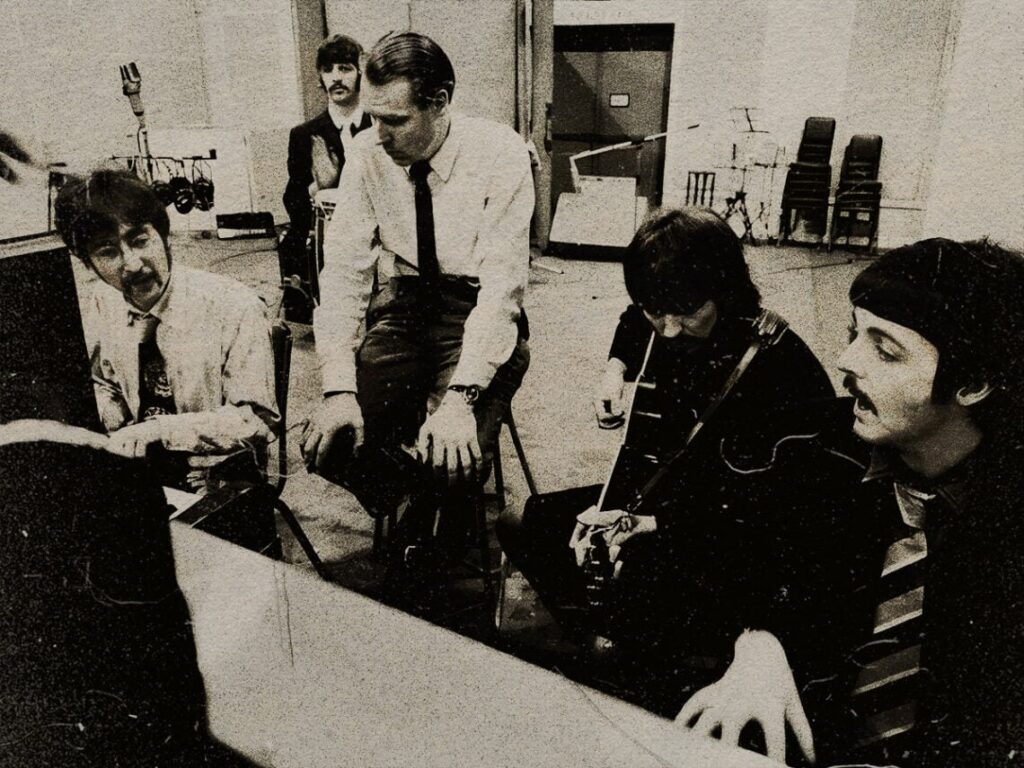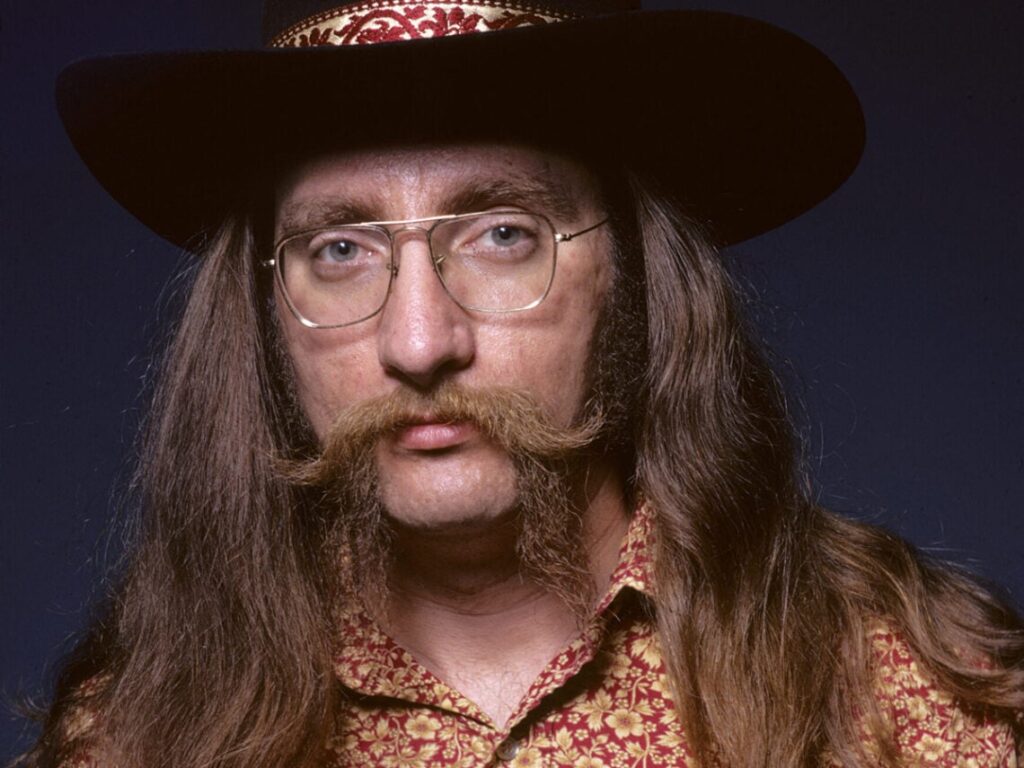Musical Miracles: 10 perfect marriages of artist and producer
 Posted On
Posted On
(Credits: Far Out / Alamy)
The producer is usually the most overlooked part of any major artist’s repertoire. As much as the musicians might be the ones who hone the songs half the time, it takes an ear for how every band member for songs to go from merely good to outstanding. When you finally get that perfect marriage of the sonics and songs, though, bands like The Beatles became the true legends they were always meant to be.
Because if a lot of bands decided to slog it out on their own in the studio, chances are they would be lost in the woods. Despite many artists becoming decent producers later in life, being able to put the microphones in the right place and ensuring that every instrument leaps out of the speakers is half the reason audiences even remember a song outside of the main guitar riff or vocal melody.
Producers are always more than just the people who hit record and hope for the best, though. Outside of being the ones behind recording the album, some of the best studio marriages see the producers become unintended songwriters half the time, usually working with whatever band they have at the time to fine-tune the arrangements of their songs to turn them into something else.
Only one caveat here: no band members as producers. Although there have been geniuses behind the board who have also played on the record, like Brian Wilson and Prince, this is an ode to the people who worked behind the board almost exclusively and tried to make the most out of the act they worked with. It normally takes a small army to get any band off the ground, and the producer is the five-star general who helped steer these acts to the top of the charts and beyond.
10 perfect band and producer collaborations:
10. Brian Eno and U2
Every producer tries to nail down a distinct musical thumbprint whenever they get into the studio. Although it might all come back to serving the artist, the fact that someone can know that you worked on something with just ten seconds of music to reference is the kind of thing anyone strives for. When talking about someone like Brian Eno behind the boards, though, it’s hard to even pick which act he lifted up the most.
Eno already had his work cut out for him when working with Roxy Music, but his turn behind the boards for artists like David Bowie was pivotal to rock history when working on his Berlin trilogy. When looking at how he transformed bands from the studio outward, he will forever be praised for turning U2 into a stadium act.
Although U2 were already bound for stadiums shortly after War, working with Eno brought them to a different artistic plane, usually involving getting the most out of Larry Mullen Jr’s drumkit and making Bono sound like an angel rather than the cheeky bastard that he could come off as 90% of the time. Even in a world where U2 should have never had a prayer in the age of irony, it’s a feat in and of itself to make some of the biggest rock stars in the world walk away with their dignity.
9. Rob Cavallo and Green Day
The cardinal rule of punk production usually revolves around having no production at all. If everyone abided by the true punk rules, there would be millions of bands playing in every major city with record deals on indie labels and songs that make guitars sound like trash compactors. There is a way to sweeten up a punk arrangement, though, and Rob Cavallo had just the band to do it in Green Day.
While Billie Joe Armstrong may have been writing the exact kind of pop-punk songs that the genre would be built on, the genre didn’t have a sound to tie everything together. Since Cavallo had a history of working on pop music, he helped the band flesh out the songs on every one of their iconic albums, laying down the foundation for their ballads and never being afraid to blow your eardrums out when he needed to.
Cavallo is also responsible for bringing more diversity into their sound as well, including adding the strings to ‘Good Riddance’ and daring them to make something that no one had ever heard before on the song ‘Jesus of Suburbia’. Green Day still made quality records without Cavallo’s help, but when you listen to the Kerplunk version of ‘Welcome to Paradise’ compared to the Dookie version, it’s like night and day.
8. Owen Morris and Oasis
If Oasis had had their way the first time around when producing Definitely Maybe, Britpop may have ceased to exist. The entire album was a nightmare to record half the time anyway, but the fact that the band couldn’t get the sound of them playing live on vinyl was enough for them to re-record the entire thing three separate times. Turns out nothing was wrong with the band themselves…they just needed Owen Morris to keep things on the right track.
Becoming the father of the ‘brick wall’ technique, Morris actually earned his spot in history by doing the exact opposite of what producers were known for. Instead of balancing out the mix, Morris designed every instrument to be pushed into the red most of the time, leading to the sonic picture being borderline psychedelic with how many different instruments were flying in and out of the final track.
Whether he meant to or not, that kind of intense energy is the same kind of sensation you get from seeing a live show, managing to keep the band’s live integrity while also making room for entire orchestras on tracks like ‘The Masterplan’. Now, if only they had told him and the rest of the band to stop doing coke during Be Here Now, they may have been able to complete a Holy Trinity of Britpop excellence.
7. Martin Hannett and Joy Division
Once punk died an ugly death after 1977, it wasn’t clear what the next sound would be. No one wanted to return to the intense sounds of progressive music, but things needn’t descend into chaos like the Sex Pistols did half the time. While Joy Division provided the middle ground and laid the basis for post-punk, Martin Hannett is as responsible as any musician in the band for bringing Ian Curtis’s tortured visions to life.
Because when you listen to the songs on their own with little adornment, they would have fallen flat on their face. Curtis’s voice was a fragile ball of emotion half the time, and it belonged in a space that felt comfortable, which is exactly what happened when Peter Hook’s bass got boosted on albums like Unknown Pleasures.
Even though Closer is one of the more fragile albums ever to be released, there’s a reason why it still sounds immaculate, with Hannett turning the knobs and even helping the rest of the band following Curtis’s death on the first New Order album. When looking at both bands side by side, though, there’s a good case the synth-rock darlings couldn’t have held a candle to what Curtis and Hannett made together on ‘Love Will Tear Us Apart’.
6. Jimmy Miller and The Rolling Stones
From day one, Mick Jagger and Keith Richards seemed to always play music on their own terms. Since they had modelled The Rolling Stones as the bluesy answer to The Beatles, there was no way they would sit behind the glass and be told what to do by some stiff in a suit. They knew how to make classics, but maybe Jimmy Miller was all it took to sprinkle some pixie dust on their classic period.
After the band freed themselves from their bad boy image, their way of putting the blues back into their sound is indebted to Miller. Although he may not have been a seasoned veteran of the blues scene by any stretch, his knack for recording and the addition of Mick Taylor helped the band loosen up whenever tape rolled, leading to bits of magic on songs like ‘Can’t You Hear Me Knockin’.
Compared to artists who are used to sounding pretty, Miller’s greatest strength was making bands sound beautifully unsophisticated. Just look through any of the tracks off Exile on Main St or the other half of Goats Head Soup to see what he’s all about. Some stuff is blown out, and not everything is exactly falling right on a grid, but it’s got a swing to it, and that is impossible to create without knowing a band on an intimate level.
5. Jeff Lynne and Tom Petty
The first half of Tom Petty’s career belonged to Jimmy Iovine. Petty may have written the songs, but it took Iovine’s handiwork on albums by Patti Smith and Bruce Springsteen for him to know what suited the song and what didn’t on a track like ‘Refugee’. Music’s not supposed to be about vibe. It’s about texture…and Jeff Lynne was practically the king of knowing what rock classics should sound like.
After he all but retired from ELO, Lynne’s approach to production on his solo records and George Harrison’s Cloud Nine made him a natural fit for his fellow Wilbury. By the time Lynne was set to move back to England, his work with Petty on Full Moon Fever had given the heartland rocker some of the best-sounding songs of his career, from the keyboard pad on ‘Free Fallin’ to the slide guitar courtesy of Harrison on ‘I Won’t Back Down’.
Lynne always came at the album as a songwriter as well, usually writing with Petty with guitars strummed right across from each other like another famous songwriting duo made famous in the 1960s. Full Moon Fever and Into the Great Wide Open might not be up to the same standard as that other band, but when you find someone like that in the wild, you won’t let them go that easily.
4. Mutt Lange and Def Leppard
It’s time we accept the truth: without Mutt Lange, Def Leppard may have never gotten past the opening act circuit. That’s not to say that the band itself is bad…quite the opposite, in fact. Def Leppard had a great knack for writing melodies and could turn nearly any hook they found into solid gold whenever they sang. They just needed a kick in the ass sometimes, and that’s where the sixth Leppard came in.
Fresh off of making Back in Black with AC/DC, Lange’s approach to sculpting rock records was perfected when he worked on Pyromania. Compared to artists who wanted to focus on loud guitars and screaming vocals, Lange made the band play perfectly in time on tracks like ‘Photograph’, creating the mix of Queen and AC/DC that would become the band’s signature for the rest of their career.
In fact, this may have been a breeding ground for Lange as well, considering that every album he produced after, from Muse to Shania Twain, had that same level of sonic sheen added to it. Leppard already had the songs, but giving them to Lange to produce is kind of like taking a decently built motorcycle and putting rocket fuel in it instead of gasoline.
3. Nigel Godrich and Radiohead
Producers are never just there to be set dressing in the studio. For any up-and-coming band, you’re just as likely to see the producer as the judge, jury and executioner on any of your classic songs as you are to see someone who’s willing to work with you. Whereas Radiohead started life as any customary alt-rock band, Nigel Godrich’s arrival in the studio gave them a new creative partner that could take them anywhere.
Starting with The Bends, every one of the band’s songs has benefited from having a little bit of twinkle from Godrich when it comes to sonic details. Even though he started life on the song ‘Black Star’, he seemed to know exactly what the band were going for on every record, either bringing Jonny Greenwood’s guitar up in the mix or knowing when to make everything drop out to include nothing but synthetic rock on Kid A.
The real testament to this kind of marriage is patience, and the band have never been afraid to work on songs and come back to them years later to flesh them out. Every record might have some sort of arbitrary deadline attached to it, but if waiting means getting a song like ‘Nude’ to sound beautiful after a decade of work, it was all worth it.
2. Rick Rubin and Johnny Cash
There has always been a bit of notoriety that follows Rick Rubin around in the music industry. For all of the bands that he has helped turn into superstars, there’s a good case to be made that all he does is talk about the songs and hardly ever touches the board outside of glamour shots. Rubin hasn’t gotten into his position by accident, though, and one of the greatest moments of his entire career was being able to resurrect a country icon after decades of irrelevance.
While Johnny Cash could have justifiably faded out of view and played ‘Ring of Fire’ on the nostalgia circuit, his series of American recordings with Rubin yielded the best comeback of any legend’s career. Rubin may have been the guy behind the biggest hits by Red Hot Chili Peppers and Run-DMC, but his knowledge of Cash as a person and a musician made him the perfect guy to choose songs for him.
Even though Rubin does have a knack for making songs that people want to hear, nothing can compare to what he did when laying down a track like ‘Hurt’. Other producers might be able to squeeze as much life out of the artist as they can, but Rubin’s way of putting Cash back on top is nothing short of miraculous.
1. George Martin and The Beatles
Considering how many avenues they went down throughout their career, many people forget about the bar band roots of The Beatles. They may have been able to make amazing music that would live on for generations, but would fans have said that about the same guys who were known to eat onstage in The Cavern and play the most raucous rock and roll known to man in the 1960s? There was no wonder the band couldn’t get signed anywhere, but where most saw a deadline, George Martin saw potential.
Knowing that John Lennon and Paul McCartney had a knack for writing songs, Martin was the one who helped turn their strange musical dreams into reality. Compared to the band’s basic knowledge of music, it took Martin’s training to keep the band pushing their sound forward, either using classical instruments on songs like ‘Eleanor Rigby’ or going to great lengths to make a song sound messed up on ‘Tomorrow Never Knows’.
It’s a strength no one realised the band needed until it was suddenly missing, with Phil Spector’s version of Let It Be sounding like a half-baked idea next to Martin’s productions. Martin may not have been interested in interacting with the band in their mischievous activities, but if anyone earned the title of ‘Fifth Beatle’, it had to be him.


